AEG washing machine malfunctions
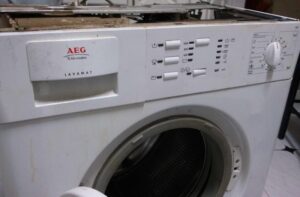 European assembly gives AEG washing machines a clear advantage - they rarely break down. But we are mainly talking about a low percentage of manufacturing defects and durable parts. If external unfavorable conditions, power surges, hard water or careless operation intervene, then a malfunction cannot be avoided. It is better to prepare in advance and learn about typical problems with an AEG washing machine. Let us consider in detail how to identify and eliminate them.
European assembly gives AEG washing machines a clear advantage - they rarely break down. But we are mainly talking about a low percentage of manufacturing defects and durable parts. If external unfavorable conditions, power surges, hard water or careless operation intervene, then a malfunction cannot be avoided. It is better to prepare in advance and learn about typical problems with an AEG washing machine. Let us consider in detail how to identify and eliminate them.
What breaks most often?
It’s worth mentioning right away that by European assembly of AEG machines we mean production in Poland and Italy. Equipment manufactured in Germany is of high quality and practically does not break, but is extremely rare on Russian markets. Our stores actively sell Italian and Polish models, which are significantly inferior to German ones in terms of strength and reliability. It is interesting that both the “Poles” and the “Italians” have the same weak points.
Of course, anything can break down on a machine. However, there are the most typical failures for a particular manufacturer, and AEG is no exception. According to statistics from service centers, most often these models have: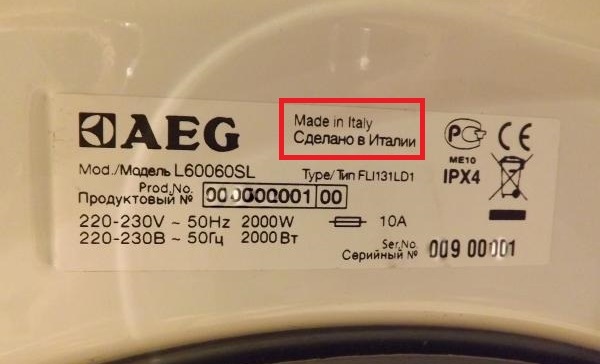
- there is no water heating (it does not work correctly or turns off altogether);
- the self-diagnosis system spontaneously triggers (the machine freezes, constantly displaying error codes on the display);
- UBL functions with errors (the hatch does not close or open);
- There are problems with draining water (the tank remains full).
AEG's weak points are heating elements, UBL, self-diagnosis and drain systems.
The listed breakdowns are a consequence of the unfinished design of AEG washing machines assembled in Poland and Italy. The thing is that these machines are equipped with low-quality UBLs and heating elements, which in Russian realities cannot withstand increased load, power surges and hard water. Often the control board fails because its software has not been fully tested. To extend the service life of AEG assault rifles and avoid expensive repairs, you need to be able to prevent and eliminate the mentioned malfunctions. Let's look at what exactly to do, point by point.
The heating element is acting up
Owners of AEG washing machines often complain about problems with water heating, which is absent even on high-temperature cycles. In 90% of cases, the heating element is to blame for the malfunction. The fact is that Italian and Polish machines are equipped with low-quality heating elements with a short service life. As a rule, on average these heaters operate for 5 years. For comparison, German analogues can last 10-12 years.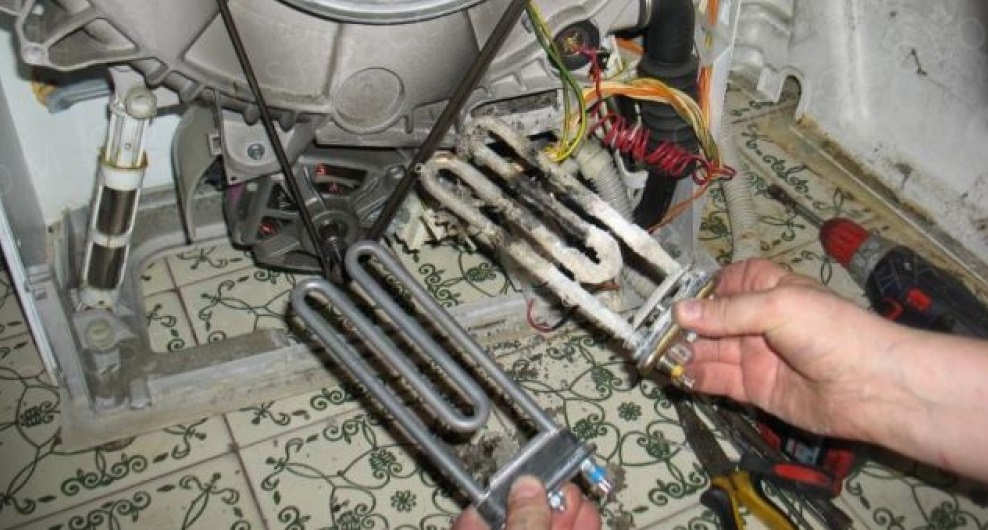
The only exceptions will be older AEG models released in the early 2000s. They are equipped with “native” heating elements, which do not exhaust their service life even after 15-17 years. Modern models are not as reliable. Poor operating conditions also shorten the life of the heating element. So, the following points negatively affect the heater:
- turning on several high-temperature cycles in a row (the heating element overheats and breaks);
- the water is too hard (the heater becomes covered with a layer of scale, causing it to overheat);
- lack of regular cleaning of the washing machine.
Troubleshooting begins with diagnosing the device. It is necessary to remove the front panel and find the heating element under the tank.We disconnect the wires from it, attach the multimeter probes to the freed contacts and call for a breakdown. If the result is bad, then you will have to dismantle the broken heater: loosen the bolts, swing it and pull it out of the mounting socket. In its place we put a new element, after which we return the end to the body and start the test cycle.
The self-diagnosis system makes itself felt
Another problem with AEG washing machines is the spontaneous operation of the self-diagnosis system. The machine periodically freezes, displays an error code on the display, but after a reboot it “forgets” the detected problem and operates in the same mode. To stop this, you need to run automatic testing of the electronic module:
- turn the programmer to the “OFF” position (on some models - “AUS”), completing the started cycle;
- disconnect the machine from the power supply;
- simultaneously press “Start/Start” (Pause) and “Exit” for a few seconds;
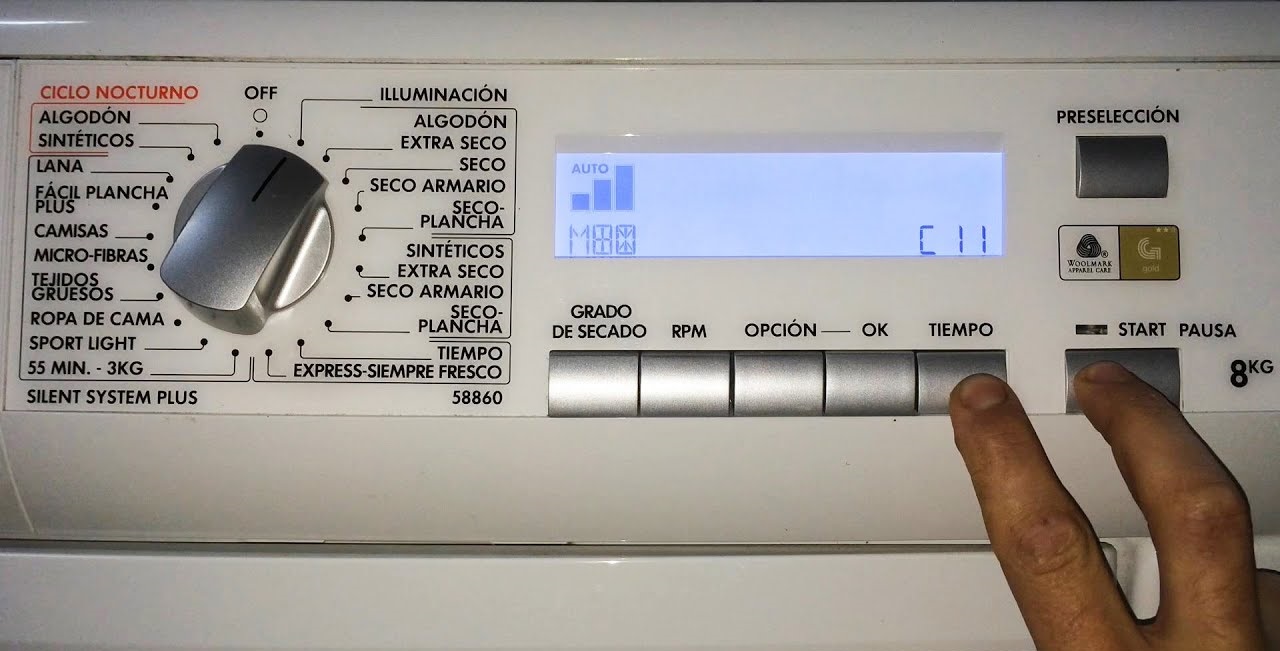
- turn on the washing machine;
- turn the selector one notch to the right;
- Press “Start” and “Exit” again until the error code appears on the display.
The factory instructions for the AEG contain all the error codes that are entered into the self-diagnosis system of the washing machine.
The code that appears must be remembered, deciphered using the factory instructions, and then the required repairs must be carried out. To exit the test mode, you must turn on, turn off the power and start the machine again.
Repairing the door
The doors of AEG washing machines often break. Despite the relatively high cost, these models have a rather flimsy locking system. Its door mechanism is reminiscent of budget Indesit machines due to its plastic latches and undeveloped fastenings.Even with careful use of the lock, malfunctions may occur: the hatch will not close or open. As a rule, the door lock suffers. Chips and burrs appear on its lever, which prevents the mechanism from working smoothly. To correct the situation, you need to return the parts to the required smoothness with your own hands. We proceed like this:
- remove the hatch door;
- we find a needle file or file with the smallest possible notch;
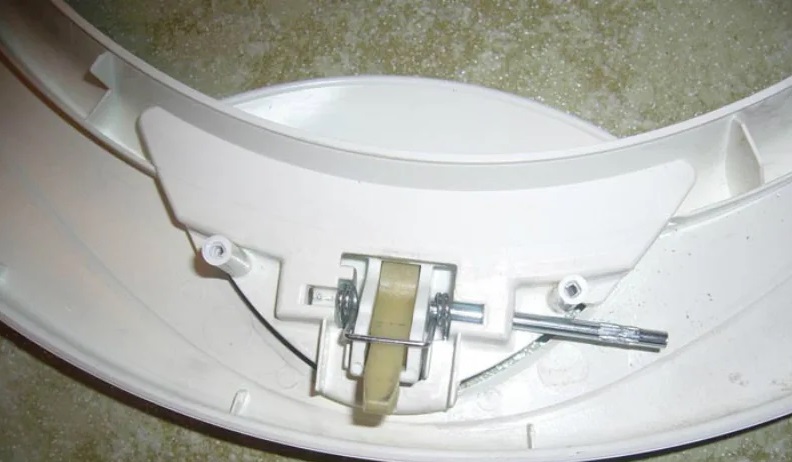
- place the tool in the key hole and grind off the irregularities on the lever;
- after turning, treat the surface with graphite lubricant;
- remove excess graphite;
- fix the door to the body.
The described repair algorithm is suitable for situations where it is impossible to open the door and remove the latch. If this is possible, then it is better to take out the blocker and grind it on a special vice. It's faster and safer.
Replacing the pump
Drainage problems are also typical for AEG. As a rule, the pump is to blame, often failing due to an unfinished design. There is no point in repairing it - it’s easier to dismantle the pump and replace it. You can get to the pump through the bottom. We disconnect the equipment from communications and begin repairs:
- disconnect the service hatch door from the body;
- unscrew the garbage filter;
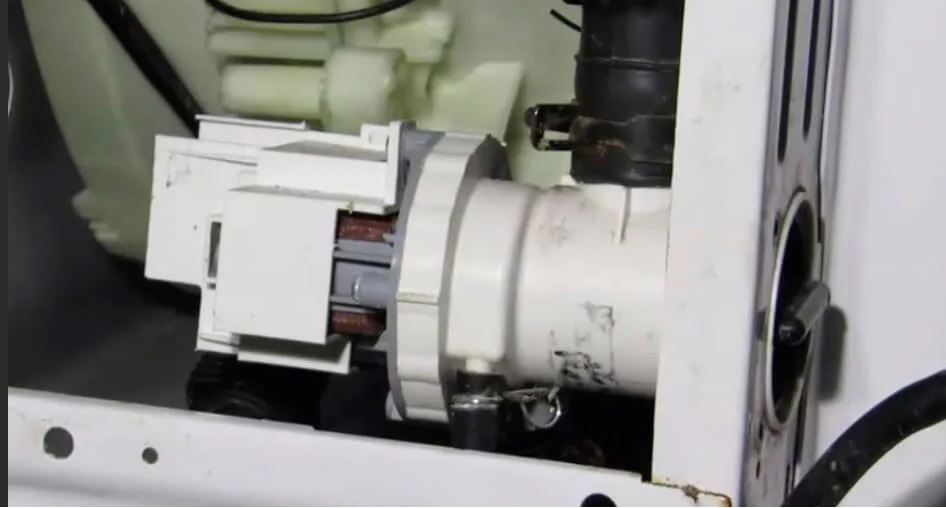
- free the pump from wires, pipes and bolts;
- turn the pump counterclockwise and pull it out.
For convenience, you can place the washing machine on its left side. The AEG cannot be placed on the right side - water remaining in the powder receptacle may get onto the control board. After dismantling the pump, it is advisable to clean its seat from scale and dirt. The new pump is screwed into the grooves, secured with fasteners and connected to the wiring and drain. Be sure to run a test cycle and check the quality of the repair.
Interesting:
1 reader comment


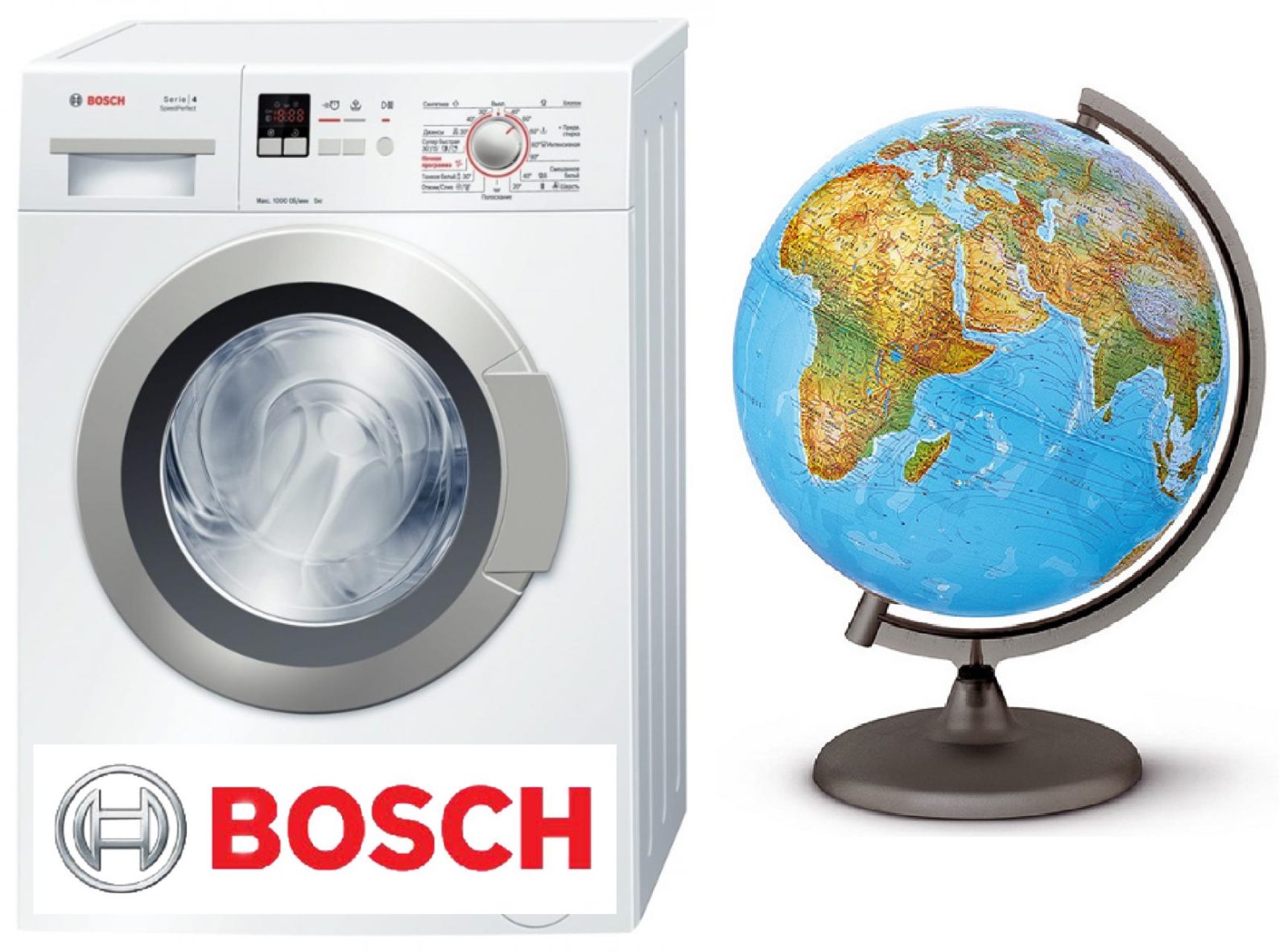
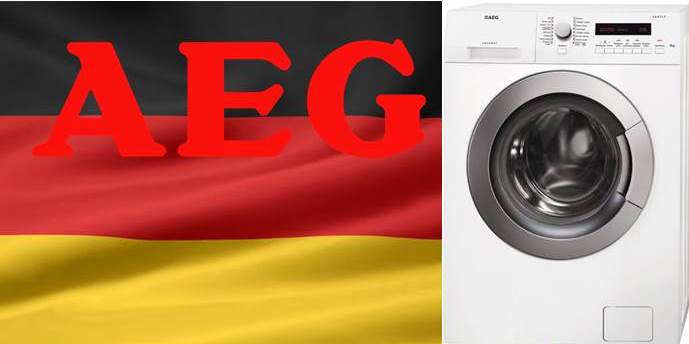


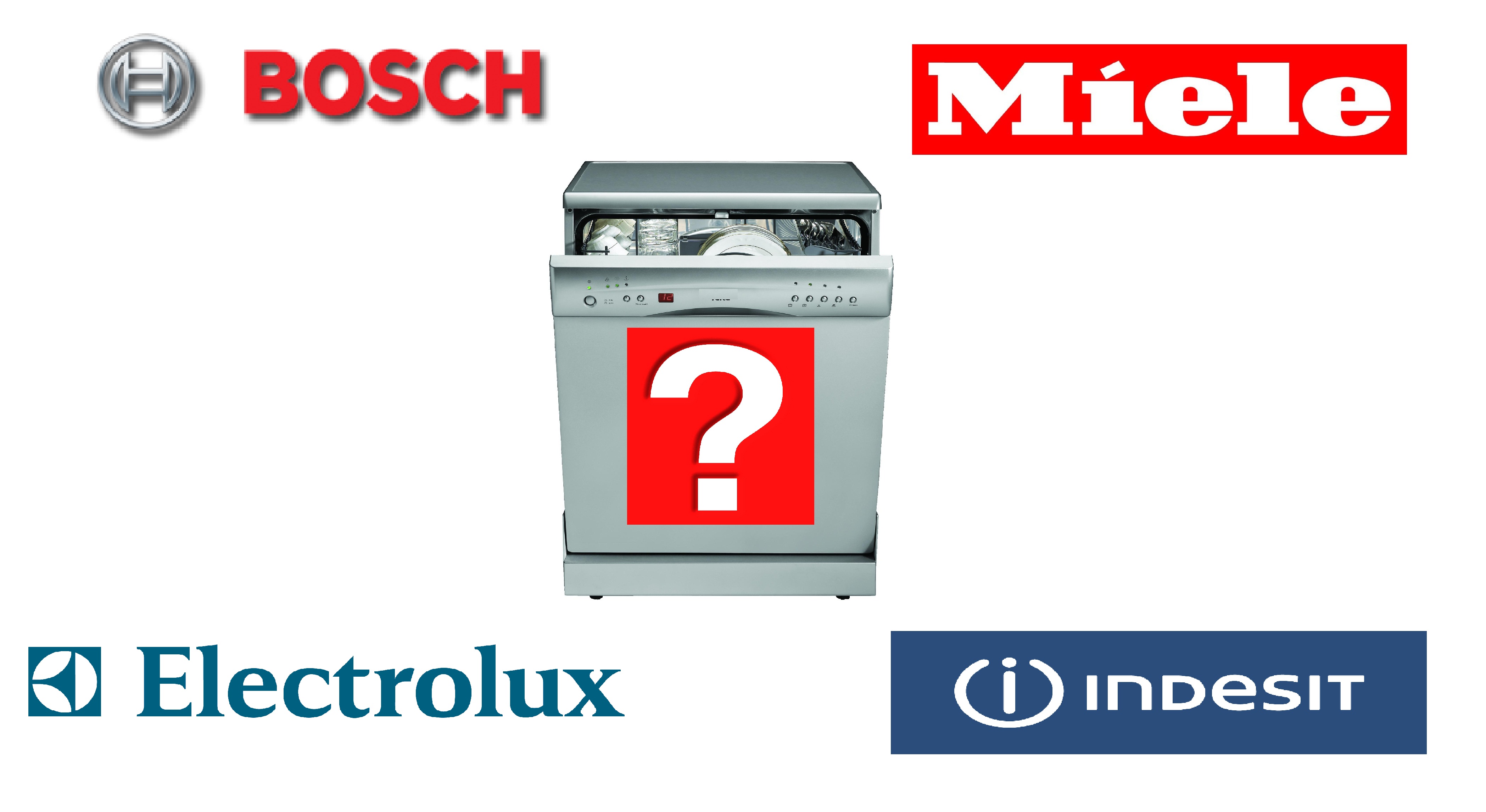














After washing, things lose their shape, the fabric stretches and sag.